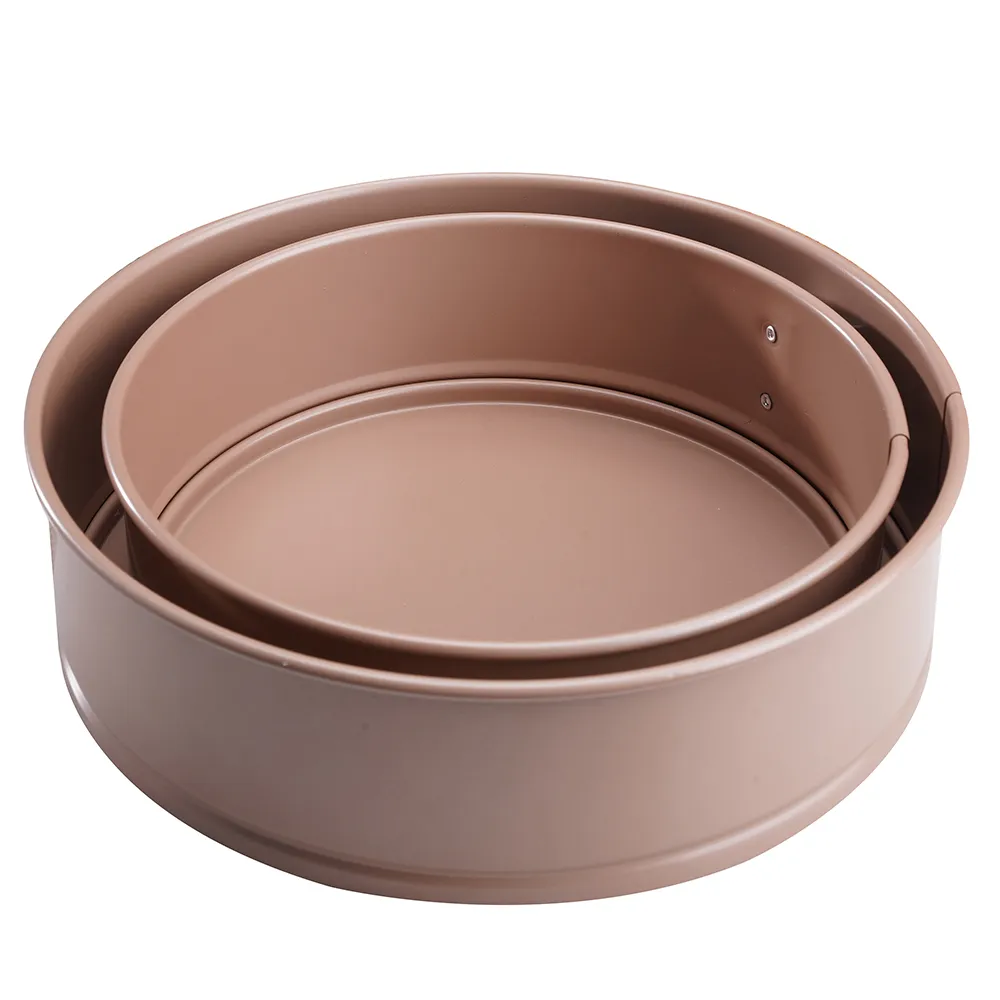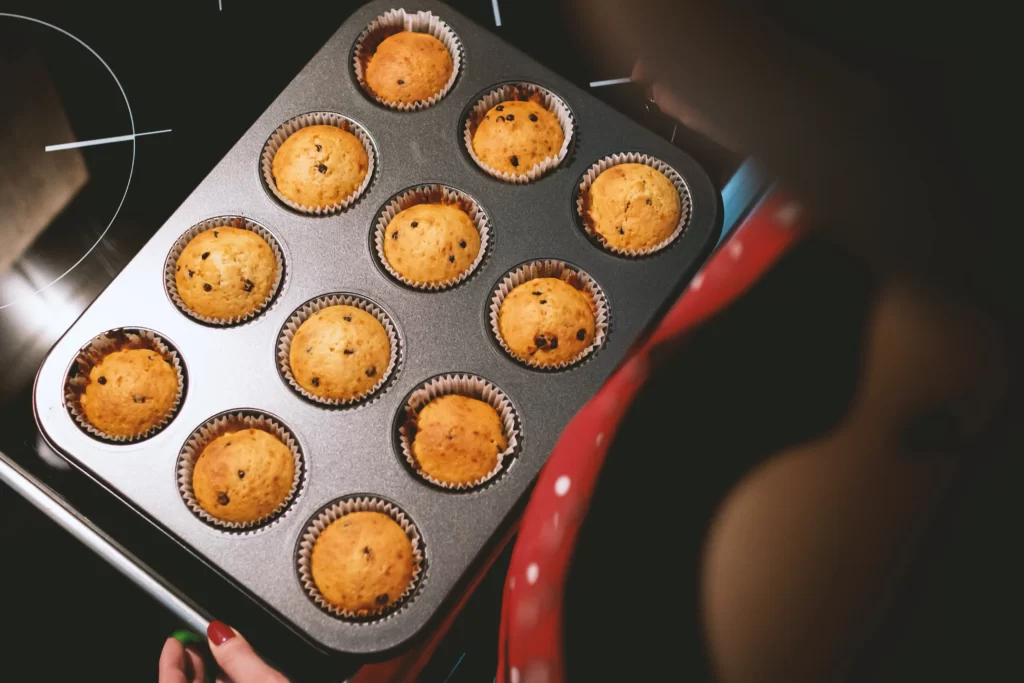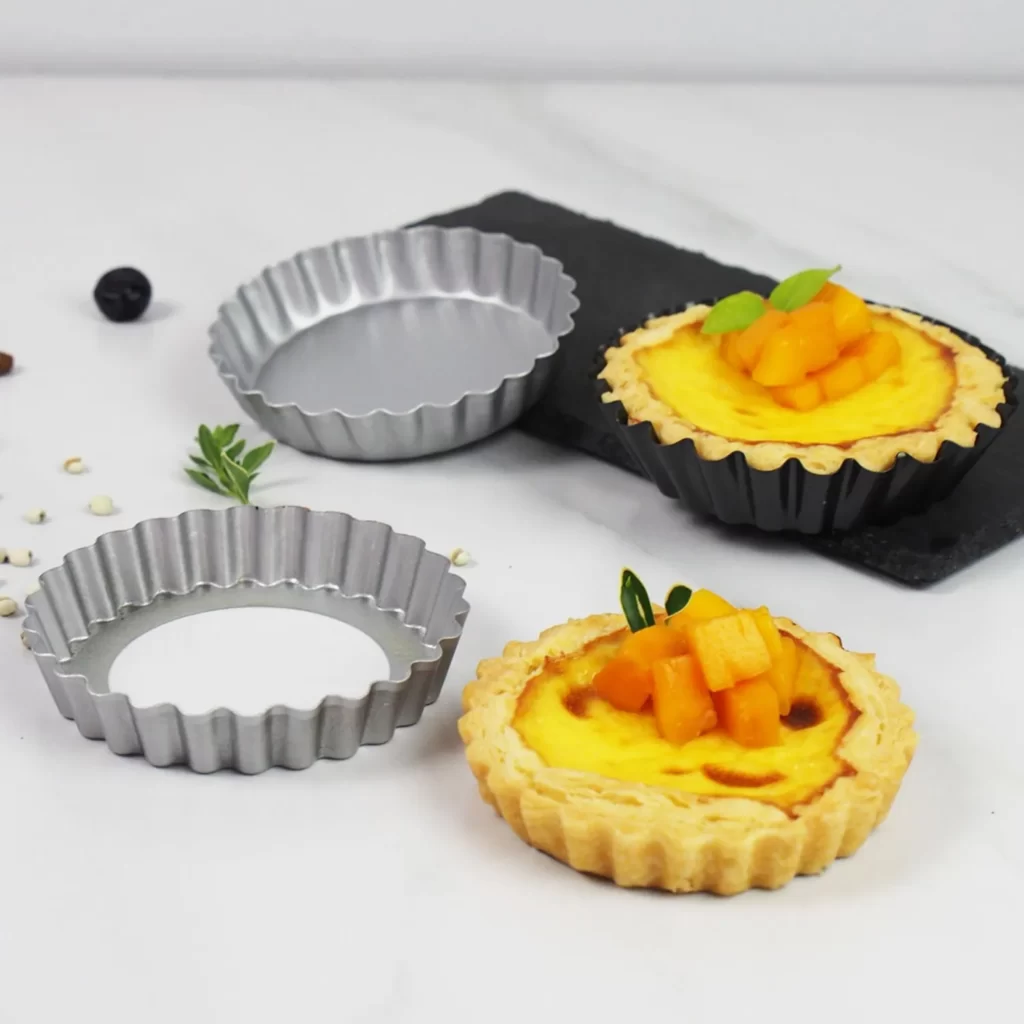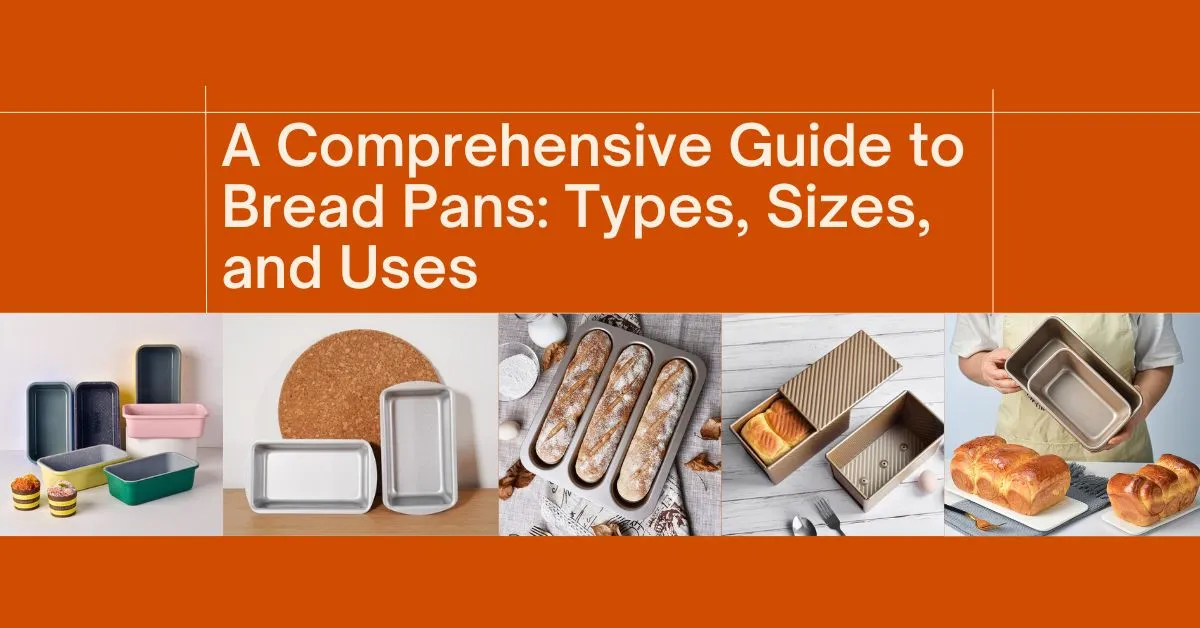Choosing Bakeware: The Ultimate Guide to Picking the Right Cake Pans
Have you ever found yourself in the midst of baking, uncertain about the best cake pan to use? Ever questioned why the texture or flavor of the cake you baked yourself didn’t quite match that of your grandmother’s recipe? Could the secret to better baking be as straightforward as selecting the right bake pans?
An excellent recipe is not enough to make the ideal cake. Choosing the appropriate bakeware is just as crucial. Although it may appear insignificant, the choice of a cake pan has a considerable impact on the baking process and the final result. Heat spreads differently depending on the material, size, shape, and color of the pan, which at some point influences the texture and appearance of the cake. Your cake will have an even rise, a flawless crust, and a smooth release after baking if you use the proper cake pan.
Keep reading if you’re curious in the critical function bakeware plays in the baking process. We are here to offer a thorough advice on how to pick the ideal baking pan and more.
Popular Bakeware Types for Home Baking
There are many different shapes and sizes of bakeware which are intended to carry out particular functions throughout the baking process. We’ll explore the distinctive qualities and the application of popular varieties as we embark on our exploration of the world of bakeware, so as to assist you make wise decisions in your baking experience.
- Round Cake Pan

Round cake pans are mostly popular when you make a layer cake or stacked cake, because their deep sides are perfectly designed for stacking or filling. Round cake pans are available in a variety of sizes, ranging from tiny 6-inch models to bigger 12-inch models. Larger diameters supply more surface area and may hold larger quantities of sheet cakes. For individual desserts, smaller portions are ideal. When selecting a round cake pan, remember to follow the receipe about the size and to ensure your baking time is accurate.

Any kitchen, whether it be in a home or business setting, has to have square and rectangular baking pans. Compared to round pans of the same size, they provide a larger surface area, allowing batter to spread evenly for good baking results. They are perfect for layered meals such as baking sheet cakes, brownies, bar cookies, lasagnas, and any other layered or portioned dishes because of their straight edges. They are frequently available in a variety of sizes, the most common sizes are 9×13 inches and 8×8 inches for home bakers. For commercial clients, extra-large sheet pans (18×26 inches) that optimize oven space for high-volume baking. Square and Rectangular baking pans typically have a depth of 1 to 1.5 inches, providing efficient heat distribution without overcooking. These pans are durable and resist deformation, even with years of usage. Additionally, because smaller pans may be kept within bigger ones, their design encourages effective storage.
- Bundt Pans

Round baking dishes called bundt pans have sculpted or fluted edges that form a ring shape. They normally have a diameter of 8 to 10 inches. Due to its unusual shape, the batter cooks uniformly and creates attractive ring patterns. The fluted tube in the centre allows for consistent heat circulation. Quick breads, molded gelatins, or chiffon cakes can all be baked in bundt pans in addition to pound cakes and bundt cakes. The appearance of baked items is remarkable due to their elaborate form. The hollow core, while typically used for cakes, may also be used for meatloaves, breads, and vegetarian foods that are molded. For full baking, bundt pans efficiently transmit heat to the interior and exterior surfaces. Bundt pans are favored for their ability to bake foods evenly and giving an attractive ring shape, which is a great choice for special occasions.
- Loaf Pans

Loaf pans are rectangular baking dishes with straight edges and ends which turn baked goods into oblong loaves. From tiny 5×3-inch pans for individual loaves to bigger 9×5-inch pans for entire loaves, common sizes range from these. Because of their distinctive rectangular form, batter may be baked into loaf bread shapes. For baking breads and fast breads, the typical depths range from 2 to 3 inches, which offers sufficient height. The lesser depth and higher surface area help standard browning. Loaf pans are often used for baking a variety of breads, ranging from banana breads to meatloaves. Their form provides baked items the typical loaf shape. The ends also make it simple to remove batters or bread from the pan.
- Muffin Pans

Muffin pans, which have several round holes, are used to bake individual muffins or cupcakes. They are usually offered in 12-cup or 6-cup sizes, with each cup measuring 2.5 to 3 inches broad and 1 to 1.5 inches depth. The design lets the batter to shape into a dome and also guarantee finest heat dispersion when baking. Muffin pans are made in a variety of materials, ranging from metal to silicone. The tight arrangement of the cups allows for numerous foods to be baked at once, and these pans aren’t only for muffins or cupcakes; they can also be used for little frittatas or other egg dishes. Individual cups are also useful for portion control, thus being suitable for snacks, appetizers, or desserts.
- Springform Pans

Springform pans, which are distinguished by its clasp-on base and removable sides, have a range of sizes, from 4-inch tiny models to larger 10-inch versions. They usually have a depth of roughly 2.5 inches. This one-of-a-kind design allows delicate baked items, such as cheesecakes or coffee cakes, to be readily removed without losing their shape, making these pans just right for recipes that require a clean release. The pan’s straight sides are also good for evenly applying ornamental icing or glazes. The leakproof seal of a springform pan assures no mess in your oven while baking cheesecakes, stacked cakes, or even frozen desserts. Springform pans are a must-have item in your bakeware collection for attractively presented cakes that keep their shape when removed.
- Tart Pans or Flan Pans

Flan pans are round pans with shallow sides and wide diameters (about 7 to 9 inches wide and 1 to 1.5 inches deep). This allows them to precisely set the thin custard used in flans. Many flan pans have fluted edges that permit a distinct pattern to the finished dessert. The pan’s shallow sides make it simple to serve your flan without destroying its delicate texture. Other than from flans, these pans are ideal for various custard-based meals that require low heat, such as flans, quiches, cheesecakes, tart shells and other custard-style bakes.
- Pie Pan
Pie pans are round with short, slanted sides. They are normally 8 to 10 inches in diameter and have a depth of 1 to 1.5 inches. The angled sides increase air circulation, resulting in an evenly cooked, crispy crust. The shallow depth helps the pie filling to cook thoroughly and brown evenly. Pie pans are designed to serve sweet or savory pies and are perfect for recipes that include a crust, be it a crispy, flaky pastry or a crunchy graham cracker crust. You’ll find pie pans in a variety of materials including metal, which conducts heat well, and glass or ceramic, which allows you to check the browning of the bottom crust. You can choose from disposable aluminum versions or more durable options made of stainless steel or ceramic.
- Sheet Pans

Sheet pans are flat, rectangular pans with slightly raised sides. They are also known as cookie sheets or baking sheets. They are normally composed of aluminum or stainless steel and are available in half-sheet (13×18-inch) and quarter-sheet (9×13-inch) sizes. The big, flat surface area is ideal for baking cookies, roasting vegetables, broiling meats, toasting nuts, and other cooking operations that need direct exposure to the heat of the oven. Spills and leaking are prevented by the shallow sidewalls. Insulated cookie sheets provide uniform cooking, while nonstick surfaces make cleanup a breeze. Perforated pans allow air to circulate, resulting in sharper results. The large surface accommodates numerous servings for high-volume cooking. Heat transmission is improved using sheet pans composed of conductive metals such as aluminum and steel. Sheet pans are useful for baking, roasting, broiling, and toasting due to their flexibility.
- Jelly Roll Pan

Jelly roll pans are rectangular baking pans with 1-inch sides that are typically about 10×15 inches. Their shallow depth and large surface area are ideal for baking thin, flat items like sheet cakes and jelly rolls. The pan’s thin profile conducts heat efficiently to bake cakes and pastries evenly without overcooking. The pan’s straight sides make it easy to lift cakes or rolled cakes out of the pan intact. Besides baking jelly rolls and sheet cakes, jelly roll pans can also be used for making cookies, candies, granolas, and roasting nuts or vegetables. Their large size provides plenty of room for baking sizable batches or spreading recipes out in a thin layer. Jelly roll pans made of metals like aluminum or steel bake goods consistently without hotspots.

Roaster pans are large, rectangular baking pans designed for roasting large cuts of meat and poultry. They are typically made from sturdy stainless steel, carbon steel or enameled cast iron. Standard sizes range from 16×13 inches for chickens and small roasts up to 22×15 inches for turkeys and large roasts. Their tall, straight sides allow plenty of room for large roasts surrounded by vegetables. Some have racks to elevate meats for air circulation. The large surface area browns meats evenly while containing juices for making gravies and pan sauces. Being more spacious than regular baking pans, roaster pans can accommodate whole poultry, large roasts, and bigger batches. Their size and depth are perfect for braising meats as well. Sturdy construction stands up to high oven temperatures for optimal browning and searing. For roasting large cuts of meat with vegetables, roaster pans provide an ideal vessel with their generous dimensions and heat conduction.
Why Does The Choice of Bakeware like Cake Pan Matter?
The choice of cake pan is important for a number of reasons, but mostly because it has a direct impact on the baking process and the ultimate result of your cake. Different pans have different functions. A circle-shaped pan, for example, is perfect for single-layer cakes and tortes, but a rectangle pan is best for sheet cakes and bars. Let us explore deeper into this subject.
What Should You Consider When Choosing Bakeware Type?
- Shape and Size: Different cakes require different shapes and sizes of pans. The shape of the pan affects the cake’s appearance, while the size influences the cake’s cooking time and its texture. A pan that is too big may turn out a flat, dry cake, while a pan that is too tiny might result in to the batter overflowing.
- Material: Bakeware such as cake pans are made from various materials, including aluminum, stainless steel, carbon steel, glass, and silicone. Each material conducts heat differently, affecting how quickly and evenly your cake bakes. For instance, dark-colored pans tend to absorb more heat and can cause cakes to brown too quickly. On the other hand, glass and ceramic pans hold heat longer and may require adjustments to baking time or temperature.
- Depth: The depth of the pan is also essential. Deep pans can hold more batter, making them suitable for heavy cakes, while shallow pans are perfect for thin, light cakes. The wrong depth can affect the baking time and evenness of baking.
- Non-Stick vs. Regular: Non-stick pans are easier to work with because cakes release from them more easily. However, they can darken the crust more than regular pans, and they require special care to maintain the non-stick coating.
- Design Features: Certain cakes require specific pan types. For example, a Bundt cake needs a special pan design to achieve its distinct donut shape.
How Do Different Materials Affect Baking?
The type of material used for bakeware plays a crucial role in how heat interacts with your baked goods. This can influence not only the baking time but also how evenly heat is distributed, the browning of your treats, and the overall texture of the final product. Let’s take a look at some commonly used bakeware materials and how they impact baking:
1. Metal Bakeware
Bakeware made from metals like aluminum is quite popular because of their superb ability to conduct heat. They heat rapidly and uniformly, which translates into consistently baked goodies. This means cakes baked in metal pans generally sport evenly browned crusts and are less prone to uneven cooking or hot spots.
According to the description on Wikipedia, aluminium is lightweight and soft.
The density of aluminium is 2.70 g/cm3, about 1/3 that of steel, much lower than other commonly encountered metals, making aluminium parts easily identifiable through their lightness.
So the problem of aluminium bakeware is that if the quality is poor like with thin thickness alumunm, the bake pan is probably tend to warp or bend at high temperatures or after mutiple uses, leading to uneven cooking. There are some concerns about trace amounts of aluminum possibly leaching into acidic, salty or alkaline foods, especially when cooked for long periods.
For shorter duration baking at moderate temperatures, disposable aluminum can perform reasonably well. But for higher heat baking and longer cooking times, more durable stainless steel, ceramic or enamel-coated bakeware may be preferable.
On the other hand, stainless steel, another common material for bakeware, boasts excellent durability and is resistant to warping, rust and staining. It is safe for a wide range of baking recipes and ingredients and can be used at high temperatures. Stainless steel bakeware won’t react with acidic ingredients like tomatoes or citrus.
However, its heat conduction isn’t as efficient as aluminum, which might result in less even baking. Quality stainless steel bakeware tends to be more expensive upfront, while poor browning can lead to pale crusts or exteriors.
Carbon steel bakeware is a favorite and inexpensive choice for many bakers due to its great heat conduction and durability. It heats up fast and evenly, perfect for baking anything from pies to cookies. It’s also sturdy and has a natural non-stick surface that gets better with use, as long as you keep it well-seasoned. Another advantage is that it doesn’t react with the food, so your treats won’t have a metallic taste. Just remember to dry it after washing to prevent rust. To summarize, while carbon steel requires some maintenance, it outperforms in terms of flexibility, strength, and baking outcomes, making it an excellent gift to any kitchen.
2. Glass Bakeware
Glass bakeware may take a bit more time to warm up, but once it’s hot, it holds and spreads heat efficiently. This can lead to well-baked and nicely browned treats, particularly around the edges and bottom. But keep in mind, because it retains heat, you might need to adjust your baking time or temperature to prevent over-browning or over-baking.
3. Ceramic Bakeware
Ceramic bakeware, similar to glass, takes a while to heat up but holds heat effectively. Known for providing a uniform bake, it’s a top pick for dishes needing a crisp or well-browned crust like pies or casseroles. Plus, with their stunning glazes, ceramic pans can go from the oven straight to the serving table, adding a touch of elegance. However, it is heavier and more prone to chipping and breaking than other materials.
4. Silicone Bakeware
Silicone bakeware is versatile, nonstick, and resistant to a broad variety of temperatures.It does not, however, heat up as quickly as metal pans, resulting in less browning on the bottom and edges of your baked items. While this might be a disadvantage for some recipes, it can be advantageous for others like delicate cakes or muffins that you want to remain light in color. It is often recommended to place silicone bakeware on a firm baking sheet to ensure stability.
5. Cast Iron Bakeware
Cast iron, like glass and ceramic, heats up slowly but holds onto that heat superbly. Its even heat distribution and retention make it perfect for recipes that need a slow bake. Keep in mind though, it’s quite heavy and needs special attention to stay in top shape.
Why is the Size of the Bakeware or Cake Pan Important?
While you might be tempted to overlook the size of your cake pan in your rush to start baking, it’s crucial to note that the pan’s size can greatly impact your end result. Choosing the right size can lead to a perfect cake, while the wrong one might spell a baking mishap.
1. Cake Height and Bake Time
Cake pan size influences the height of your cake. A smaller pan leads to a taller cake as the batter has less space to spread out, whereas a larger pan results in a flatter cake due to more space for the batter to spread.
This height difference impacts baking time. A thicker, taller cake needs longer to cook through, risking over-browning or drying on the outside before it’s fully baked inside. Conversely, a thinner cake in a larger pan will bake and possibly dry out more quickly. Therefore, choosing the correct pan size is critical to achieve a perfectly baked cake.
2. Volume Capacity
To match the amount of the batter, choosing the proper pan size is crucial. With a small pan, an overflowing batter might occur, resulting in an oven disaster. In contrast, in a bigger pan, the batter may spread widely and overcook. Therefore, choosing the right pan size is essential for achieving the best baking outcomes.
3. Cake Texture
The size of your cake pan can also impact the cake’s texture. A smaller pan can lead to a dense, heavy cake, as the batter lacks space to rise adequately. Conversely, a cake baked in an oversized pan might end up being dry and overcooked because more surface area is exposed to heat.
4. Aesthetic Considerations
Finally, the size of your cake pan has an impact on the appearance of the final cake. If you want a towering, stacked cake but choose an overly big pan, your cake layers will be thinner than planned and won’t have the same aesthetic effect.
What Role Does the Shape of the Bakeware Play?
The shape of your bakeware can make a huge difference in your baking and cooking results. Here’s why:
- Heat Distribution and Cooking Time: Bakeware shape can influence how evenly heat is distributed. Wide, flat pans like cookie sheets distribute heat well because of their large surface area, perfect for baking cookies or roasting veggies. In contrast, deeper dishes like loaf or casserole pans cook slower and less evenly, which is suitable for recipes like lasagna or meatloaf that need slow cooking.
- Food Shape and Presentation: The shape of your dish can determine the form of your food. For example, bread takes the shape of the loaf pan it’s baked in, cookies spread on a flat sheet, and muffins rise in a muffin pan. This can make your food visually appealing.
- Recipe-Specific Bakeware: Some recipes need certain bakeware shapes. Pies and tarts require round, shallow dishes with sloping sides for crust support. Bundt cakes need the distinctive ring-shaped Bundt pan to achieve their unique design.
- Ease of Use and Safety: The shape of your bakeware can affect its ease of use and safety. Wide pans with handles are easier to grip and remove from the oven. Deep dishes with high sides prevent spillage, making them safer for liquid-filled recipes.
To summarize, bakeware shape matters as it affects cooking time, food appearance, recipe suitability, and kitchen safety. Hence, having an array of bakeware shapes is handy for any cooking or baking task.
Why is the Color of the Bakeware Important?
Believe it or not, the color of your bakeware isn’t just about looks—it can also impact your baking. How so? Different colors absorb heat differently, which can change the outcome of your baked treats.
1. Dark-Colored Bakeware
Dark-colored bakeware absorbs heat more, making it hotter in the oven. This means your baked goods might cook quicker and form darker crusts. So, if you’re using a dark pan, consider reducing your oven temperature by around 25 degrees Fahrenheit and check on your treats a bit earlier to avoid over-browning or burning. Dark pans are great for foods like pizzas, as they help achieve a crisp, brown bottom crust.
2. Light-Colored or Shiny Bakeware
Light-colored or shiny pans reflect more heat, resulting in slower, more even baking. This means your treats are less likely to brown or burn at the bottom or sides. Opt for light-colored bakeware when you’re aiming for a golden crust rather than a dark one, like with certain cakes and cookies.
3. Glass or Ceramic Bakeware
Glass and ceramic bakeware, while not really colored, have unique baking properties. They heat up slower than metal pans but once hot, they keep the heat longer. This can result in longer baking times and possibly darker, more evenly baked bottoms and sides of your goodies.
To sum up, the color of your baking pans isn’t just about style. It can greatly influence how your treats bake and their final color. Always keep a close eye on your baking, especially if the pan’s color differs from the recipe’s recommendation. With some knowledge about color’s role in baking, you can choose the right pan for your baking needs and consistently whip up perfect, tasty goodies.
Conclusion
Surprisingly, picking the right baking pan can make a world of difference in your baking. It’s more than just a holder for your cake mix – it significantly impacts how well your cake cooks. So, next time you’re shopping for baking pans, pause to think: Does this pan match my baking needs? Will it help me make a cake that’s not only yummy but also visually pleasing?
FAQ
1. What is the difference between a springform pan and a regular cake pan?
A springform pan has detachable sides, making it ideal for delicate desserts such as cheesecakes. A conventional cake pan, on the other hand, is one piece and must be flipped over to remove the cake.
2. When would I use a silicone bake pan?
Silicone bake pans are nonstick and flexible, which results in simpler cake removal. They’re perfect for complicated designs when keeping the cake’s form is critical.
3. Is a metal or glass cake pan better for baking cakes?
Each has its advantages. Metal pans heat up quickly, which is easy to achieve a golden crust. Glass pans retain heat well and allow for visual monitoring of the baking’s progress.
4. What type of bake pan is best for a novice baker?
If you’re new to baking, a simple round or square pan in light-colored metal is a good starting point. They’re handy for many recipes and give reliable baking results.
5. Why are some cake pans with removable bottoms?
Pans like springform or tart pans with detactable bottom are suitable for making delicate or fancy cakes because they make it easy to take out the cake without damaging it.
6. Why is non-stick coating common in cake pans?
A non-stick layer on the pan means you don’t need to use much oil or butter. It also makes it simple to get the cake out of the pan without messing up its shape.
7. Can I use a cake pan on the stovetop?
Don’t use cake pans on the stove. They’re made for the oven’s balanced heat. The direct heat from a stove can twist or ruin them.
8. Does the thickness of the cake pan matter?
Sure, thicker pans warm up evenly and don’t bend easily. They also keep heat longer, which can affect how long it takes to bake.
9. What is the purpose of the tube in the center of some cake pans?
Some cake pans, like ones for angel food cake or Bundt cake, have a tube in the middle. This tube lets heat get to the cake’s center faster, making sure it bakes evenly.
10. What’s the difference between a baking pan and a baking sheet?
Bake pans are deep, perfect for baking cakes or deep-dish goodies. On the other hand, baking sheets are flat and great for making cookies, roasting veggies, and other stuff.








